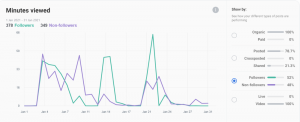UTM parameters are tags added to the end of a URL to track web source traffic and the success of content on the web for marketers. The tags are visible within Google Analytics helping to identify the best ways to drive more visitors to your website. UTMs tell the story of how your traffic is coming to you so it is important to track the performance of each link.
An example of UTM parameters is highlighted in the URL below:
http://www.pedowitzgroup.com/blog/?utm_campaign=blogpost&utm_medium=socialmedia&utm_source=twitter
This is where we are labeling the traffic that is generated from this link. A strong UTM link should help you answer some basic questions about your web traffic:
- Where is my traffic coming from?
- How is it getting directed to me?
- Why is it coming to me?
How to Structure UTM Parameters
You can use any naming convention; however, I recommend keeping it simple and consistent (e.g. use lowercase letters and dashes and no underscores while omitting spaces.) I’ve seen analytics become an absolute mess simply because UTM’s have been created with no process or plan. There are five different UTM parameters, which may be used in any order:
1. Campaign (required): Identifies the campaign title, as it exists in your analytics.
- Ex: utm_campaign=captain-america-discount
2. Medium (required): Identifies what type of link was used.
- Ex: utm_medium=social
3. Source (required): Identifies which site sent the traffic.
- Ex: utm_source=twitter
4. Content: Identifies ad content – it can be ad-size format, link placement, short ad-copy description or any combination thereof specific to the product promotion or strategic campaign. This is often used with PPC or when two identical links are used on the same page.
- Ex: utm_content=adwords-whitepaper-200x400x
- Ex: utm_content=headerlink or utm_content=sidebarlink
5. Term: Identifies key search terms.
- Ex: utm_term=marketing+automation
The great thing about UTM parameters is that you can be as detailed or broad as you like by using any combination of the above as long as you use the first three (campaign, medium, and source) as they are required. Google offers a simple tool to create UTM links where you enter the values in text boxes and it builds the link for you. Your marketing automation platform most likely has a tool as well.
Wait… Don’t Forget!
- To create a naming convention guide for your marketing team, agency and/or new hires to quickly reference and understand what each parameter means.
- To choose the perfect URL builder that’s right for you to help your team manage URL tagging. There are free tools available like Google Analytics URL builder tool, various online tagger templates or this could be developed in-house using a spreadsheet.
- To maintain a spreadsheet of tagged URLs to store all of your UTM parameters in one place.
(65)





